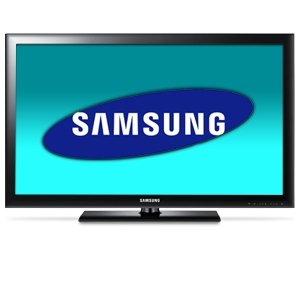How to Compare LCD with Plasma TV
When it comes to flat TVs, two technologies come to mind, LCD (Liquid Crystal Display) and Plasma. A lot of people are puzzled about these two types of flat screen technologies and choosing between them can be quite a bewildering task. If you need to compare LCD to Plasma TV, you may find something useful in the following information.
46 Lcd
Flat Screen Technologies Compared
46 Lcd
The LCD screen is comprised of two clear panels that have a crystal-filled liquid between them. These crystals reposition themselves to either block light or let light pass through and the result of millions of crystals doing this is the picture on the display. The action of the crystals is triggered by voltage.
Plasma TV, on the other hand, is composed of millions of small glass cells filled with rare gases such as xenon and neon. These cells are lit by phosphors that are activated by electrodes. Each cell contains three different colored phosphors - green, blue and red. Like in the LCD screen, the combination of the millions of cells forms the image on the display.
Picture Quality and Performance Compared
Brightness - according to independent viewers, LCD TVs are brighter than plasma TVs. On the average, plasma screens have brightness ratings of about 100 candelas per square meter while LCD TVs have around 450. This perception of this brightness is of course dependent on where the TV is located and what is being watched.
Contrast Ratio - contrast ratio measures the distance between the darkest and whitest display of the TV, a high ratio means greater details can be discerned. In the real world, LCD TVs reportedly have higher contrast ratios which can amount up to 450:1 compared to 200:1 for plasma TVs.
Color Saturation - color saturation measures the accuracy of the colors on screen based on the present of gray shades, higher gray shades results into lower saturation. Plasma TVs are famous for their high color saturation due to the method it emits light. The ability of Plasma pixels to be turned off when they are not in use prevents the emission of stray light that diffuses color. This is why tints and hues in Plasma TV are noticeably more vivid and vibrant.
Size - plasma TVs are generally larger than LCD TVs. Plasma TVs can be as big as 60 inches but can only be as small as 32 inches. LCD screens can be as small as 13 inches but no larger than 46 inches. Sizes beyond these ranges are being developed, however.
Viewing Angle - pictures in plasma TVs are still clearly discernible at about 160 degrees and even 180 degrees for some models. With LCD TVs however, the picture becomes dull beyond 100 degrees.
Lifespan - Plasma TVs can last for 20,000 to 30,000 hours which means that it could run for around 20 years with an average usage of 4 hours a day. LCD TVs last longer, with a lifespan reaching to 50,000 or even 60,000 hours, meaning it could last 40 years with an average daily usage of 4 hours.
Costs - since LCD TVs are generally smaller, they are also less expensive compared to Plasma TVs. LCD TVs also use less electricity
Flat screens are continuing to be the popular choice among televisions these days. Whether it is Plasma or LCD, a flat TV can definitely give you a more hip viewing pleasure.
How to Compare LCD with Plasma TV
46 Lcd
Black Friday Samsung LN46D503 LN46D503 46 1080p LCD TV 2011 Deals
Nov 28, 2011 06:33:47
Click for larger image and other views

>> Click here to update Black Friday prices for Samsung LN46D503 LN46D503 46 1080p LCD TV <<
Black Friday Samsung LN46D503 LN46D503 46 1080p LCD TV Feature
- 1920 X 1080 Full HD Resolution (16:9 Aspect Ratio)
- 60Hz Auto Motion Plus With Clear Motion Rate
- Inputs: 2 HDMI, 2 Component, 1 USB, 1 PC
- Dimensions On Stand (WHD): 43.4 X 28.9 X 3.1
Black Friday Samsung LN46D503 LN46D503 46 1080p LCD TV Overview
SAVE NOW on Black Friday offers below!
Available In Stock. |
| This Black Friday Samsung LN46D503 LN46D503 46 1080p LCD TV ships for FREE with Super Saver Shipping. |
Price : Click to Check Update Prices Please. |



0 komentar:
Posting Komentar
Please write your comments here.Thanks.